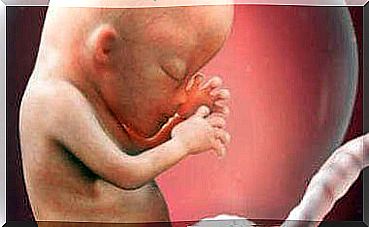5 Primary Symptoms Of Appendicitis

Severe pain in the lower region of the abdomen can be a symptom of an infection of the appendix. This condition is known as appendicitis and it can be fatal. Therefore, we will look at the primary symptoms of appendicitis so you can be prepared.
The appendix is an enigmatic and conflict-ridden organ. It measures up to 10 centimeters in length and it extends through the colon. The primary symptoms of appendicitis are acute and persistent pain that makes it difficult to walk.
When this situation occurs, it is not advisable to wait for more symptoms of appendicitis before choosing to go to the doctor. Learn more about this painful condition, below.
What is appendicitis?
There are many reasons why this small organ can swell up. Basically, the passage or flow in the colon becomes narrowed, which can cause inflammation and manifest itself as discomfort in the right area of the abdomen.
When the inflammation occurs, the infection in the appendix can begin as the toxins present in the sac become impossible to release. Gradually, the pain will increase markedly and they will extend from the center of the abdomen to the lower region.
As a consequence, if the appendicitis does not receive immediate treatment, the infection can cause an abscess that causes the tissue to break. This result is called peritonitis and it can be fatal.
5 symptoms of appendicitis
To a greater or lesser extent, the patient will, in general, experience the following symptoms, in any case of appendicitis:
- Severe pain in the lower region and middle of the abdomen, usually on the right side. It is also common for stiffness and swelling to occur in the area.
- Vomiting, lack of appetite and dizziness.
- Fever.
- Diarrhea and constipation.
- An increase in leukocytes in the blood.
Now, let’s take a look at each of the points in detail so we can better understand the symptoms of appendicitis.

Acute pain
In the first hours of appendicitis, when the inflammation is new, the pain will be discrete and around the navel. As the hours go by, the brain will be able to determine where the nerve signals are coming from. Within 24 hours, the pain from the swelling of the appendix will move to the lower abdomen.
The area where the swelling takes place, as well as the description of the patient’s pain, is usually an ample indication for the physician to determine the cause when he or she needs to make the diagnosis.
2. Lack of appetite, dizziness and vomiting
These symptoms may occur at the same time or separately, as not all three are always present. However, the intense pain will be accompanied by the previously mentioned signs to a greater or lesser degree.
In itself, appendicitis cannot be diagnosed on the basis of dizziness, vomiting and loss of appetite. This also applies to the other symptoms we have listed. If the pain is localized in the specific area, then it really triggers an appendix alarm.
Symptoms of appendicitis: Fever
Fever is the body’s primary defense mechanism, and it varies from person to person. In general, fever is not necessarily an alarm signal within the symptoms of appendicitis. Normally, the temperature does not exceed 38 ° C.
If appendicitis is successful and perforation occurs, body temperature can rise markedly. In this case, the infection is severe as the stool may come in contact with the abdominal region.
4. Constipation or diarrhea
The presence or absence of diarrhea, as a symptom of appendicitis, depends on the distance from the rectum to the pelvic area. When the rectum is within the area of inflammation, this symptom can occur. The stool does not necessarily lose consistency, although the frequency of each stool increases.
On the other hand, constipation is considered a rather atypical symptom in this case. It is mentioned simply because, if it occurs, it is probably part of the same image.

5. Symptoms of appendicitis: Increase in leukocytes in the blood
Leukocytes are the primary defense cells in our body, and a simple laboratory test can determine their number. Accordingly, if the amount is greater than normal, it will be a clear sign that there are external factors triggering an inflammatory or infectious process.
If the number of leukocytes is high, it means that the inflammation is getting worse and that the immune system will produce more white blood cells.
Finally, all of these symptoms of appendicitis should be related to the area and type of abdominal pain that the patient is describing. In general, the doctor will suggest that the organ be removed, in order to prevent serious infections in the future.
Living a healthy life, practicing sports, avoiding an inactive lifestyle and following a balanced diet may be the best way to prevent appendicitis in children, young people and adults.









